PSV halt Ajax title charge
PSV took on Ajax in Eindhoven on Sunday afternoon in a crucial fixture in the Eredivisie title race. Ajax came into the game on a 15 match unbeaten run in the league, winning 12 of their last 14. This late title push put them only 1 point behind league leaders Feyenoord prior to the weekends matches. Feyenoord beat Vitesse 2-0 earlier on Sunday afternoon, mounting pressure on Ajax to get a result. PSV themselves were also in good form after winning their last 9 home matches, making it a tough task for Ajax to remain within touching distance of Feyenoord with only two fixtures to play after this one.
Ajax’s first half build-up issues
The visitors struggled in the first period, and were lacking features of their game that have been prominent under Peter Bosz in recent weeks. Ajax had two goal kicks in the opening minutes of the match, and attempted to play out from the back as they have tended to do from these situations. However this was quickly abandoned after both short goal kicks led to the loss of possession as a result of PSV’s typically Dutch man-orientated marking.
Sanchez and de Ligt moved deep and wide to the edge of the penalty area, but were closely marked by Ramselaar and Bergwijn. Veltman and Viergever moved high and wide to hug the touchline, which left Schone to operate in the centre. Onana would attempt to progress through the middle via Schone, but Locadia’s presence behind the Dane meant he had no time to receive and turn. His other team-mates within the vicinity and Schone’s field of view were marked, meaning his only option was to pass back to Onana. From here, the goalkeeper sought to pass to the wide full-backs. However, they were closely covered by PSV’s central midfieders leading to PSV regaining possession.
This was particularly effective for PSV because of how their 4-3-2-1 formation naturally matched up to Ajax’s. Their two wingers and striker could cover the CB’s and Schone, whilst their central midfielders could mark Ajax’s full-backs and their other deepest midfielder, which was usually Klaasen.
Ajax also found it difficult to progress the ball out from defence in the first half because of their lack of manipulative off ball movement to disrupt PSV’s man-orientated marking. No consistent dynamic to produce passing lanes or create space was evident. This was a big part of Ajax’s game in their recent dominant 2-0 win against Feyenoord, where the outside central midfielders would drift outwards to drag opposition players away to provide a passing lane into the centre-forward. I was surprised to not see something similar from Bosz’s team in this match, especially because Feyenoord and PSV’s defensive shapes tend not to be all too different. Their best means of advancing was through counter-attacks, where there was occasionally space through central areas because of PSV’s midfield moving too high up the pitch as a result of their man-orientations in relation to Ajax’s deeply positioned central midfielders. This was particularly notable with PSV’s most central midfielder Guardado because of the space he left behind him, though this scenario wasn’t a commonality.
Wide spaces in transition
Both sides more commonly had spaces through the wings and half spaces to exploit in counter-attacking situations, especially in the first half. Ramselaar and Bergwijn, as well as Younes and Traore for Ajax were often so highly orientated when attacking that once the opposition won the ball, their was a vast amount of space to exploit in behind them near the halfway line on the counter attack. This was also to some extent because of both sets of full-backs tending to play fairly deep. Furthermore, both sets of three central midfielders played fairly narrowly, promoting the production of these spaces out wide. Nevertheless, neither side failed to create anything from these situations, which was usually because of poor complimentary off ball movements from team-mates to the ball carrier which were too linear, flat and one-directional.
When inside PSV’s half, Ajax would primarily seek to attack through the wings. Because of the 3 v 3 central midfield match-up and their occupation of each other, Younes, and especially Traore picked up the ball close to the touchline, allowing them to isolate against the opposing full-backs in 1 v 1 situations by dribbling through the wing into the half space diagonally towards goal. However, both wingers’ were lacking incisiveness and were quite poor with the ball at their feet. They regularly lost the ball and Ajax failed to devise quality chances through the pair.
Ajax’s defensive issues high up the pitch
The away side also found it difficult to win the ball high up the pitch, and their method in trying to do so was clearly flawed. When the players in their defensive line had possession, PSV’s full-backs were usually in a relatively close proximity to the centre-backs, creating a back four chain. This left Ajax’s front three outnumbered, creating a problem in itself. Klaasen or Ziyech would rarely step out of midfield to properly pressurise PSV’s central defenders, which led to Younes’ having a tendency to move centrally, which was the most problematic feature of their approach. When PSV had the ball on the left side, Traore and Dolberg would typically mark Brenet and one of Moreno or Isimat. This left the other centre-back unmarked on the right. Younes, who was typically already marking Arias, repeatedly moved inside to close to the central player, but this left Arias open behind him numerous times. Ziyech and Viergever were able to get to Arias once or twice, but they were consistently too far away from him or were occupied by another PSV player themselves. This made Arias a means of progressing into Ajax’s half multiple times. On one occasion, Arias was so open he was flailing his arms wildly at his team-mates.
It was unclear whether Younes was instructed to do this or if he decided to carry out this movement himself. Nonetheless, it was a clear issue in Ajax’s approach.
The first half was fairly drab overall. Neither side greatly threatened the opposing goal until Locadia’s stunning free-kick gave PSV a 1-0 lead. Inadequate decision making and a lack of sharpness and speed are features that could be used to describe Ajax’s first half, which was a disappointment considering how well they have been playing recently.
Second half improvements
Ajax started the half in an improved manner. Their positional structure and spacing was better, which I’m sure Bosz aimed to repair at the half time interval.
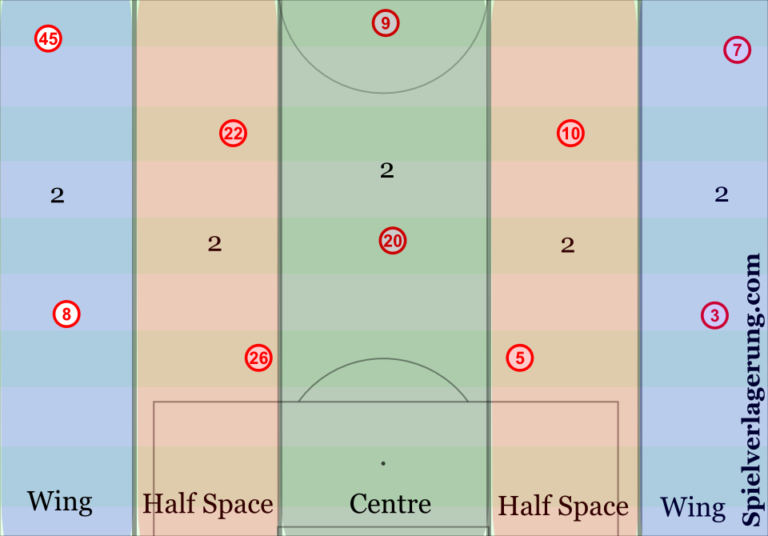
Bosz’s Ajax aim to maximise passing angles and space by positioning 2 outfield players in each of the pitch’s 5 vertical corridors.
Their actions and movements were quicker and executed to a moderately higher standard, leading to the away side retaining a greater percentage of possession in the second half (60%), though chance creation was still lacking. Ajax’s change of personnel on the wings for the second half helped to improve their play (Kluivert came on in the latter stages of the first half for Traore because of injury, whilst Neres was introduced at half time in place of Younes). Both Neres and Kluivert’s superior acceleration and technical ability compared to Traore and Younes (in this match) meant that their dribble isolations (on the occasions they did so) were more effective than in the first half, putting the PSV full-backs on the back foot. However, they more regularly sought to run in behind the defence off the ball on the outside of the full-back, especially Neres, who was able to obtain the ball in dangerous areas in and around the right side of the PSV penalty area after running in behind the defence. This gave Ajax an improved 4-1-2-3 structure in possession with Kluivert and Neres playing wider off the ball rather than carrying the ball inside at their feet as Younes and Traore were. Additionally, Neres was much more of a crossing threat on the right side than Traore because of the latter’s tendency to cut inside onto his stronger left foot.
For the most part, Ajax were also better defensively in the second half, particularly when in a state of defensive transition against PSV counter attacks. Viergever and Veltman’s deep and central positioning, along with either Schone, or more commonly de Ligt or Sanchez stepping out of defence reduced space in the centre of the pitch for PSV to advance in to. Viergever, Veltman and de Ligt displayed good anticipation, and finished the game with 2, 3 and 4 interceptions respectively. This chain of 3 players (which every now and then became a chain of 4) covered the width of the pitch well enough to squander PSV’s counter attacks for the most part.
Conclusion
The play in this match was generally lacking quality, especially from Ajax, who underwhelmed when you compare their play in this match to their recent performances. Although, it’s worth noting that PSV’s xG is slightly inflated due to a couple of high quality counter-attacking chances in the closing stages of the match when Ajax were throwing players forward. This result has surely ended Ajax’s title pursuit and handed the Eredivisie title to Feyenoord, who now have a seemingly unassailable 4 point lead with only two games to go.


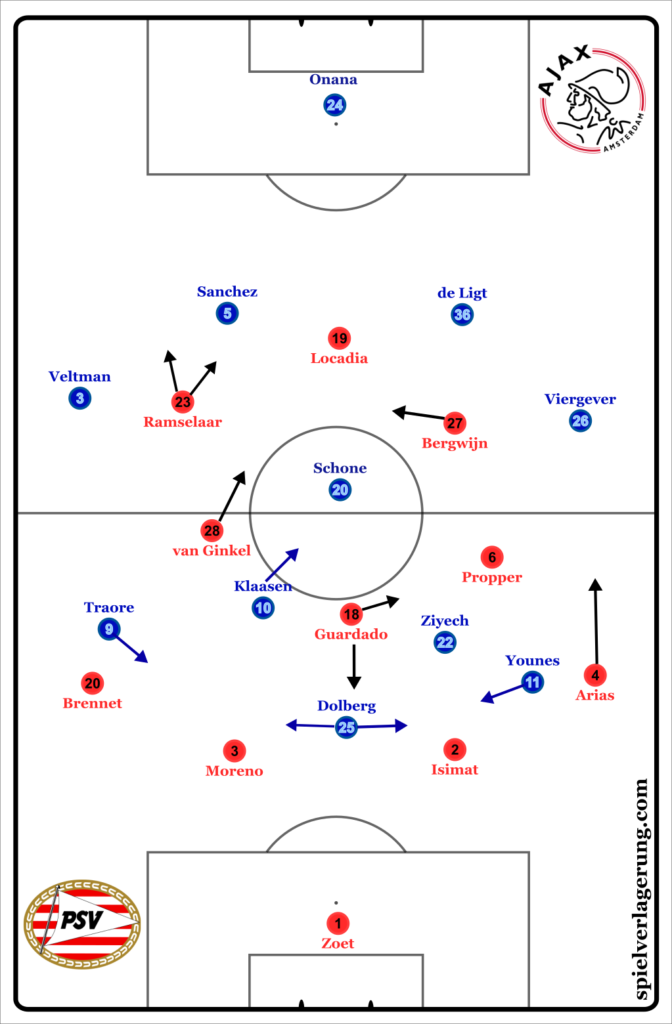
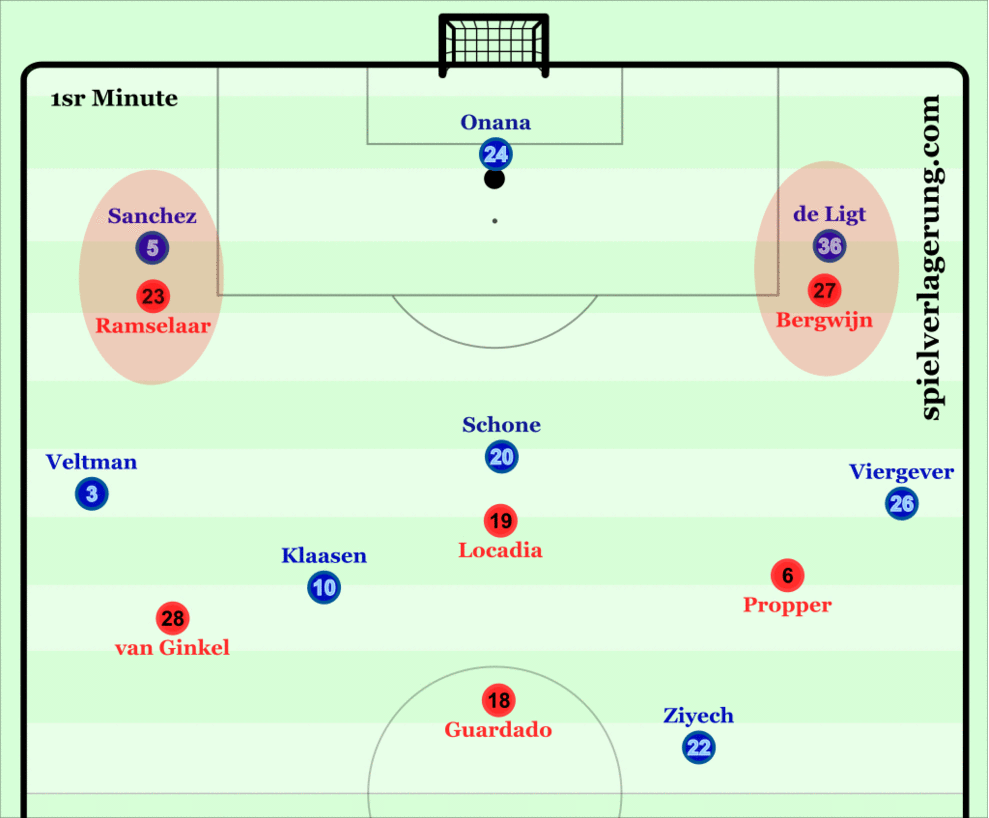
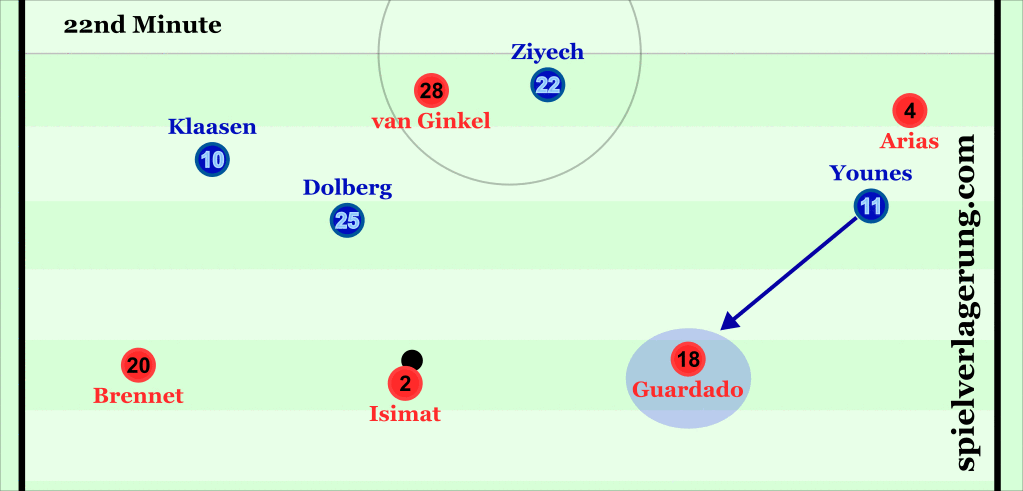
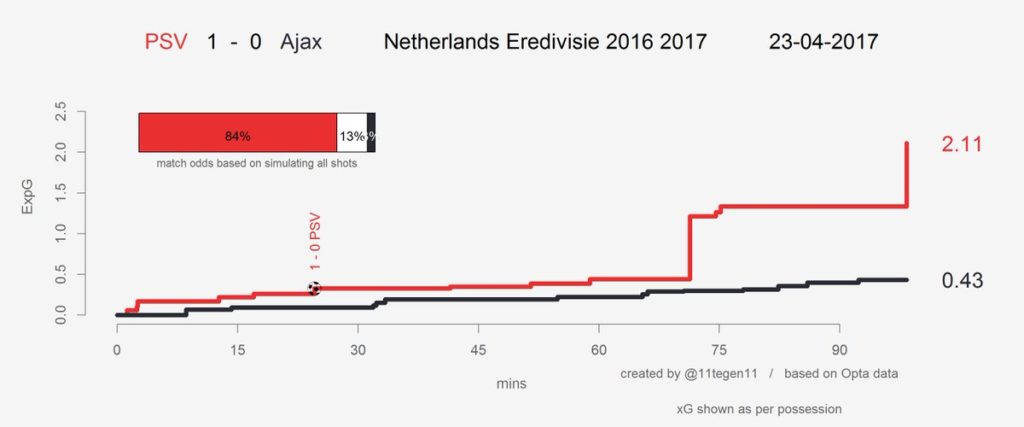
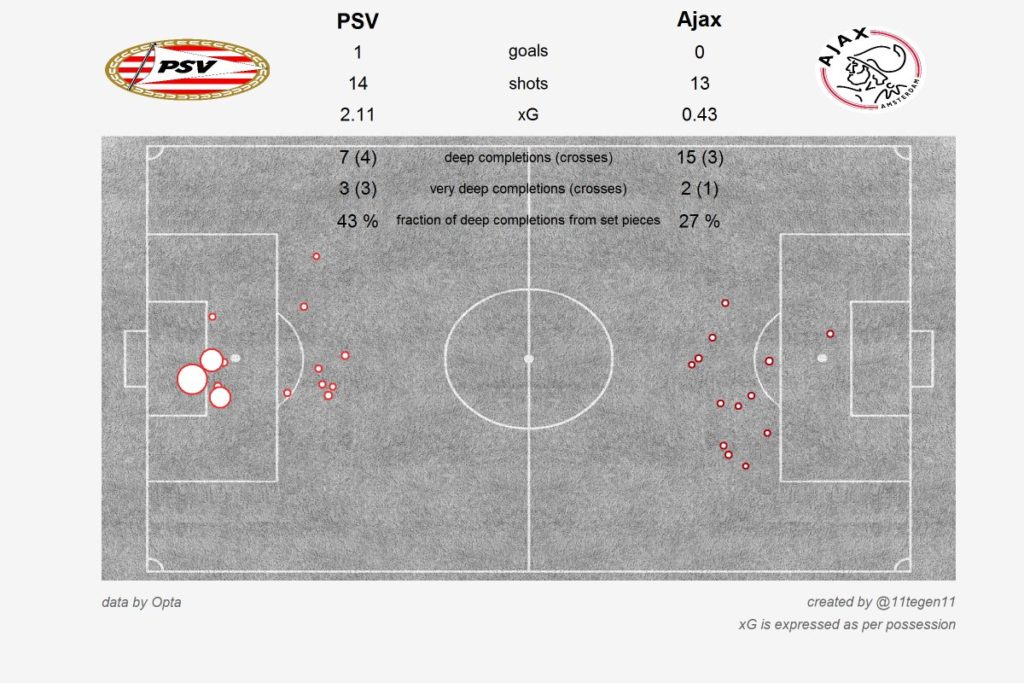
1 Kommentar Alle anzeigen
Dave April 26, 2017 um 12:22 pm
Any idea why Ajax would abandon the off the ball movements to create space for for the striker, which was so effective against Feyenoord?